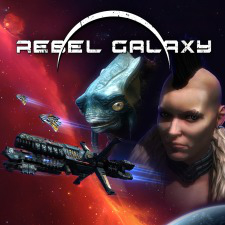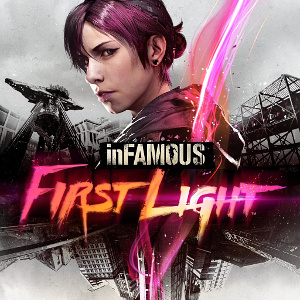 Developer: Double Damage Games
Developer: Double Damage Games
First Release: 20th October, 2015
Version Played: PlayStation 4
Length: Long
Available: PS Store US | PS Store UK | Xbox One | Steam
Your aunt Juno sends you a message to meet her at an out-of-the-way space station. Turns out she’s gone missing, but she’s left you a strange artefact.
The story is an adventure with a space Western feel to it. There’s nothing deep about the plot. It’s intended as a lighter tale, and that’s what it is. I would have liked something a little more concrete about the artefact’s origin, but the story basically does its job of guiding the player through the game.
A lot of the game is in the side activities, as the player needs to do these to get better gear between story missions. The basic setup reminded me of Elite. Money can be made through missions, trading, attacking other ships, mining asteroids, and similar things. It’s possible to be a pirate or fight them for the bounties. Where it differs is the game has a much easier learning curve, making it accessible for anyone looking for a little space action without having to perfectly line up a ship to dock it at a station (it’s a simple button press in this game). The scope is also smaller, as it spans a limited number of systems.
Combat was a little unusual, as the ship can only travel on a flat plane, rather than being able to go in any direction. Some of the enemy ships in the game can fly all over, but the big ones stay on that flat plane. It’s more like an ocean ship game, where ships fire weapons from their broadsides. Plus there’s a little help from the turrets, which are controlled by the game by default. This does make combat a lot easier, as there’s no spinning around aimlessly trying to find attackers. There’s a good mix of weapon types to choose from, as well as a range of ships, so I found the fighting fun.
The art direction of the game is pretty. Space is not an empty void. Colourful gas clouds fill each system, with a few nebula storms adding to the feel of space as an ocean. There are more asteroids than is realistic, but the aim is clearly not for realism. It’s creating a certain feel, of space as something a little more cosy, where there’s always something going on. I liked the range of asteroids to mine, as I’ve always been down for a bit of space mining.
Image Caption: A spaceship firing a mining laser at a shiny metallic asteroid. In the distance, there’s a gas giant with two rings. Game interface icons show on the screen, with the message “Distress Beacon Detected”. Even space miners don’t get any peace.
Where the art is weakest is the character models, which are seen on contacting ships and in the space station bars. There are basically two models for humans, which have been tweaked a little for the different roles. These models are coupled with a limited range of dialogue options. This is an area where the budget of the game really shows. However, it’s notable that the models are a man and a woman, meaning that every role can be a woman, from pirates to miners. A lot of high budget games fail on this, not because of money, but because they’ve actively chosen not to have women in the NPC groups (even if the story says they are there). This equality is treated as usual in the setting, with no sexist comments aimed at any of the women. The player is not gendered and is never shown or described.
Race is not as well handled, as the human models are all white. Even with a limited budget, there could have been some skin tone variation.
Overall, it’s a fun space adventure that isn’t too difficult in terms of gameplay. The different solar systems and side activities aren’t variable enough to really keep a player going beyond the story, but this isn’t much of a criticism. There’s a solid 20-30 hours of gameplay. A little more for people aiming for all the trophies (some of which are a bit of a grind, but nothing too difficult). I’d recommend it for anyone looking for something to hit that space exploration itch.

